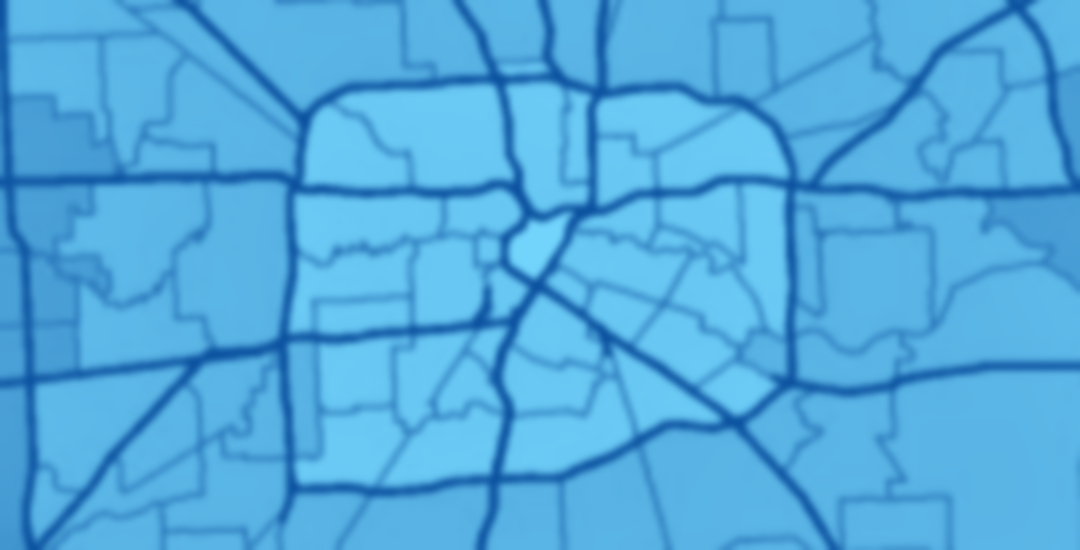From Census data, researchers can look at counties, cities, ZIP codes or tracts for analysis, but each geographic resolution has its limitations. The county, city and ZIP code level might be too broad, yielding data that does not adequately capture the nuances of a diverse population. Tracts may be too narrow, making analysis cumbersome and yielding results that come with higher margins of error.
Meanwhile, communicating results to stakeholders and members of the public may also prove challenging. After all, when you ask someone, “Where do you live?” a ZIP code is often not their first response, and no one knows their Census tract number. Instead, they are likely to name an area or neighborhood they associate with, such as “Alief” or “Northside.”
As the Goldilocks principle goes, what researchers need is an analytical lens that is “just right” to help understand community-level data and communicate what it means. This is where the Kinder Community Tabulation Areas are an ideal solution.
Created in the mid-2010s by the Kinder Institute, the CTAs aggregate data from Census tracts into sensible areas that more closely resemble the various neighborhoods and communities that form Harris County. Within the city of Houston, CTAs approximate the Super Neighborhood boundaries; outside the city, school district boundaries help identify swaths of unincorporated areas. In some cases, Houston Area Realtors market areas, high school attendance boundaries, management districts, and tax increment reinvestment zones (TIRZs) informed decisions about where to draw the boundaries.
Because census tracts change after every decennial census, CTAs must also be redefined to reflect slight changes in population distribution. The Kinder Institute has recently released the definition for 2020 CTAs along with select variables of the American Community Survey (ACS) data aggregated at these levels.
The Kinder Institute’s Jay Wang, Karl Zou, and Hien Le updated the 2020 CTA definition to be as close as possible to the 2010 CTA definition. Though the match is not 100%, it is close enough in the majority of cases to allow researchers to compare pre-2020 data to post-2020 data.
Take, for example, population data from the 5-year ACS. When grouped by CTA, this will show where the population is growing and shrinking within a county that is growing overall.
CTAs can also be grouped for another layer of aggregation. Taking the previous example, let’s say we want to understand which neighborhoods are growing faster than others, but we also want to zoom out to see whether the growth is generally occurring more rapidly outside Beltway 8, inside Beltway 8, or inside Loop 610.
Because each CTA has a unique ID number, which begins downtown with 001 and continues outward in a clockwise pattern around Houston’s multiple highway loops, an analyst could group multiple neighborhoods to look at population patterns more broadly. This makes it possible to define large subdivisions of the county such as “Inner Loop,” (for CTAs 001-031), and “Outside Loop, Inside Beltway,” (for 032-087) and “Outside Beltway” (everything else).
By grouping the neighborhood CTAs and aggregating their data by those categories, the result is clear: About 10 times more people were added outside Loop 610 between 2015 and 2020, with the “Inner Loop” adding about 26,000 people compared to over 227,000 new residents outside the Beltway and another 71,000 who lived inside Beltway 8 but outside Loop 610. Put another way, Harris County added about 324,000 total residents over this time span, and of that increase, 80% of it occurred "outside the Loop."
This exercise is just one example of how researchers and policymakers can aggregate data at the community level and ask questions with more relevance to specific neighborhoods and areas within the often overwhelming Harris County landscape.
In the hands of well trained analysts, data at this level can lead to more effective policy solutions, inform neighborhood advocacy and guide potential development decisions. For example, CTA-based analysis could help stakeholders understand inequities across neighborhoods, visualize gentrification and displacement patterns, and assess the degree of access to parks and green spaces. There are myriad possibilities.
With CTAs as a geographic framework, the data team at the Kinder Institute has generated dozens of datasets that have already been aggregated at the CTA level to speed up analysis efforts. Recent updates to the Urban Data Platform catalog include:
- American Community Survey (ACS) - Five-Year Estimates - Frequently Used Variables
- Houston Police Department Aggregated Crime Data
- City requests for service (311) Curated Data - 2022
New datasets are added and existing datasets are updated regularly. The Kinder CTAs and the public datasets from the Urban Data Platform are free to use by researchers and the public alike. We hope these tools continue to advance our understanding of the people and communities of the nation’s third-largest county.
Hien Le and Karl Zou contributed to this article.

